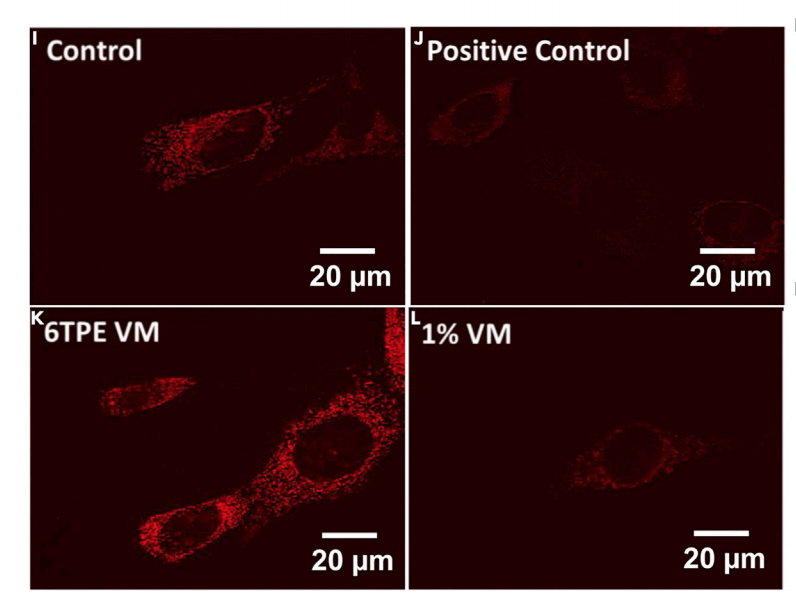62 5.8: Altered Mitochondrial Membrane Potential
Tetramethylrhodamine methyl ester (TMRM) dye can be used to visualize the mitochondrial membrane potential. High amounts of this red dye can be seen in the aerosol treatment meaning the mitochondria is live, active, and has an increased membrane potential. However, the dye is lower in E-liquid treatment suggesting damaged, leaking, and lower membrane potential for the mitochondria. The membrane potential is thought to rise in both treatment groups due to increased ROS production. However, the increased ROS production causes lowered membrane potential in the E-liquid treatment group due to membrane damage (Zahedi et al., 2019).

Key Takeaways
- ROS production increases the mitochondrial membrane potential of the aerosol group
- E-liquid treatment group displays a lowered potential due to mitochondrial membrane damage
